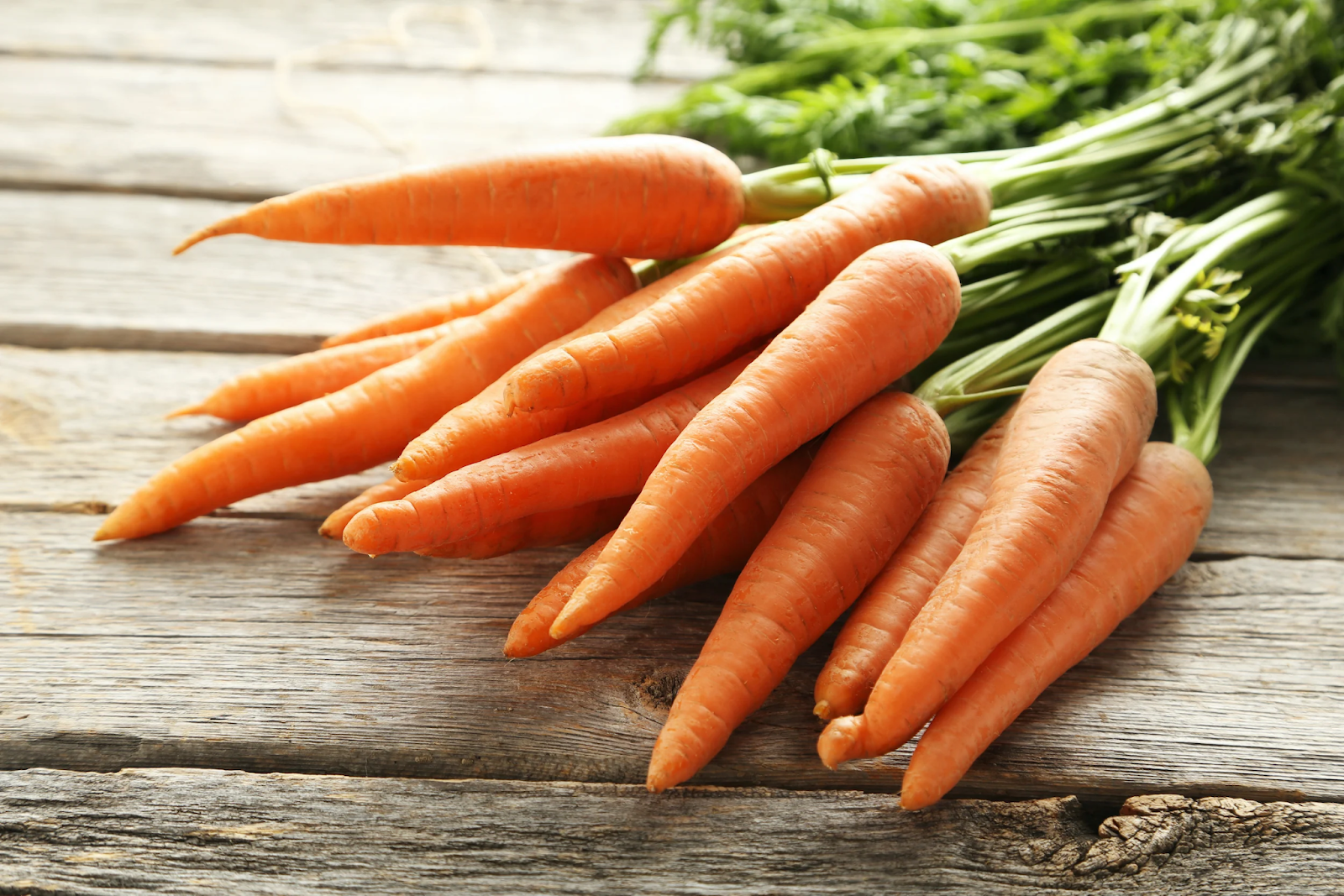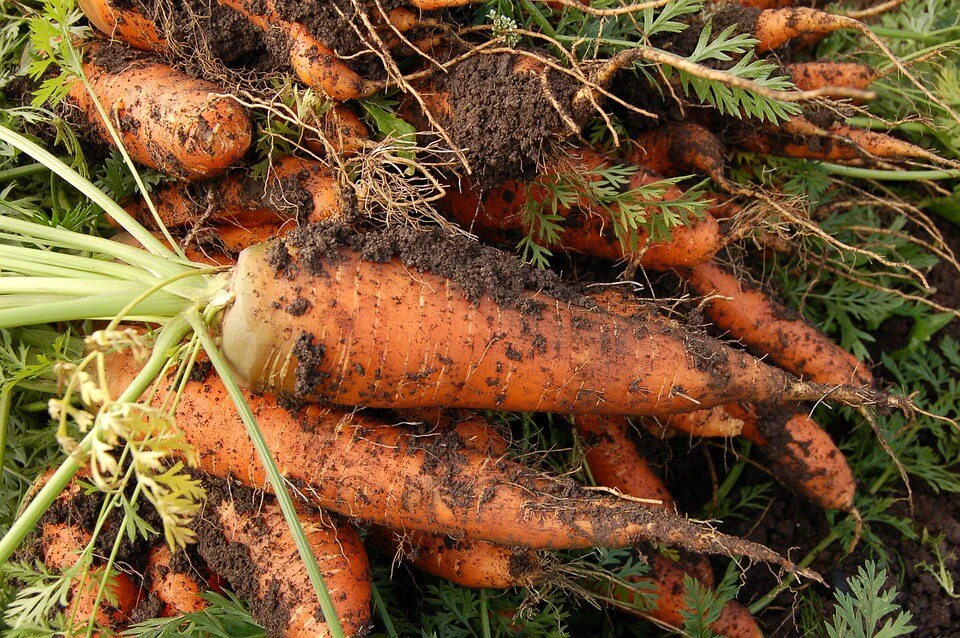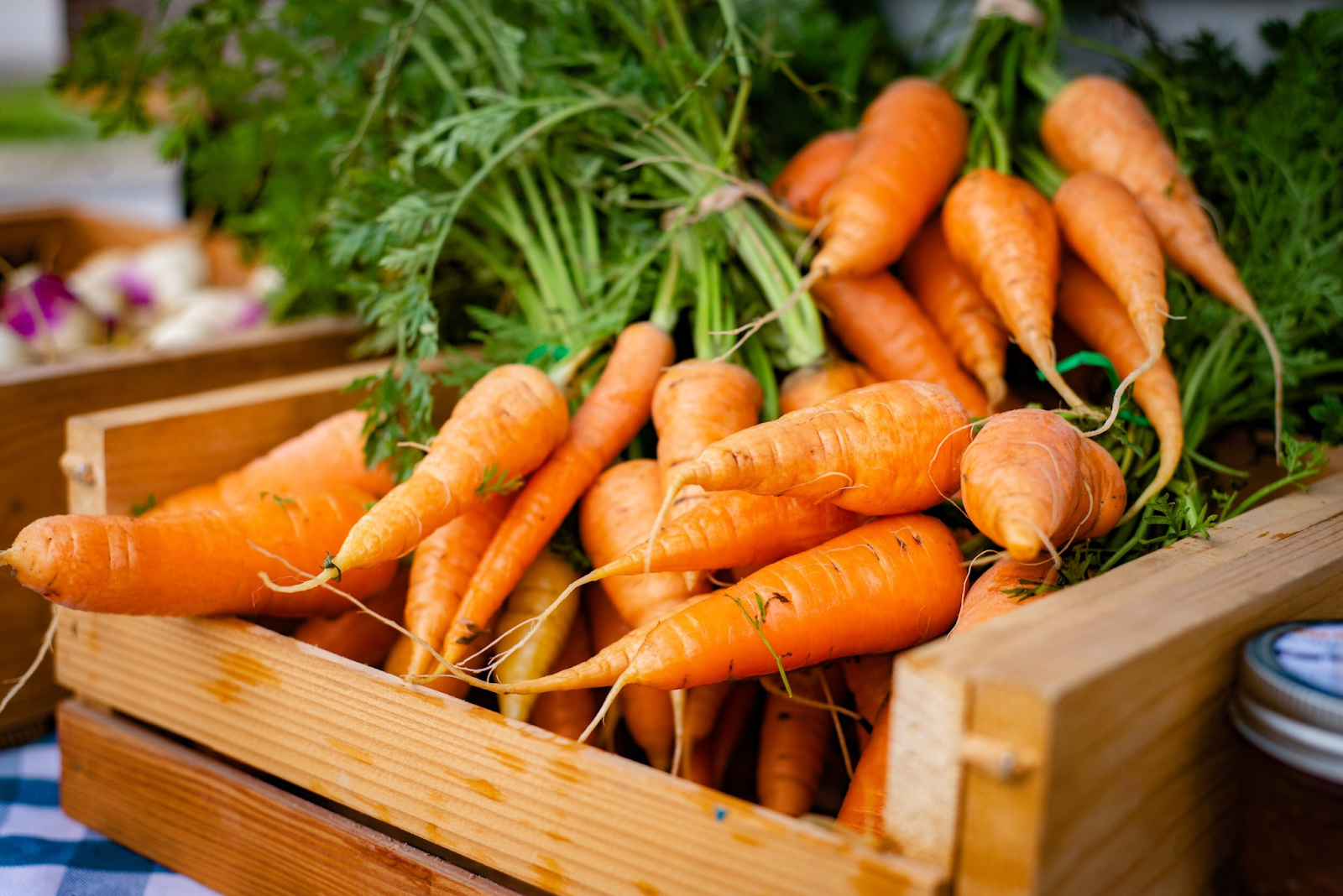Growing vegetables at home has become a popular way to enjoy fresh, healthy food. Home gardening allows people to take control of what goes into their food, ensuring it's free from harmful chemicals and pesticides. One of the easiest and most nutritious vegetables to grow is the carrot. These bright orange roots are not only nutritious but also very versatile in the kitchen. Carrots make a great addition to any garden, offering a healthy harvest and a fun gardening experience.
Homegrown carrots are far superior in taste and quality to store-bought ones. Growing carrots at home allows people to control the growing conditions, making producing sweet, crunchy, and vibrant roots easier. A freshly harvested carrot from the garden offers a crispness and sweetness that can’t be found in supermarket varieties. Growcycle provides helpful gardening tips for quickly growing carrots and other vegetables at home.

Botanical Description
Carrots (Daucus carota) are root vegetables belonging to the Apiaceae family, including parsley, celery, and fennel. The plant is biennial, meaning it completes its life cycle over two years, though it is typically grown annually for harvesting the root.
- Roots: The edible part of the carrot is its taproot, which is typically orange but can also be purple, red, yellow, or white, depending on the variety. The root is cylindrical or conical in shape and tapers to a point. It can vary in size from small to large, with some varieties growing up to 12 inches or more in length.
- Leaves: Carrot leaves are feathery, finely divided, and fern-like. They often grow 1 to 2 feet tall. When crushed, they are bright green and aromatic, with a strong, slightly earthy scent. Carrot leaves are compound, meaning several leaflets are arranged on a central stalk.
- Flowers: In the second year of growth, carrots produce small, white, or off-white flowers grouped in umbrella-shaped clusters called umbels. These flowers are typically about 1–2 inches wide and attract pollinators like bees and butterflies. The flower heads are often surrounded by a ring of bracts (leaf-like structures).
- Seeds: After flowering, the carrot plant produces tiny, brown, or tan seeds that are oval in shape, around 1–2 millimeters in diameter. These seeds are often used to propagate new plants.
Characteristics of Carrots
Carrots are one of the most popular and versatile vegetables grown worldwide. Here are the different characteristics of the carrot plant:
Appearance
- Shape: Carrots have a characteristic conical or cylindrical shape, tapering to a point. The root grows straight or slightly curved depending on the variety and growing conditions.
- Size: Carrots vary widely depending on the variety and growing conditions. Typical carrots can range from 6 to 12 inches in length, but some varieties can grow even longer. The diameter of the root is generally about 1 to 2 inches, though baby carrots or smaller varieties may be shorter and more slender.
- Color: While the most common carrot color is bright orange, other varieties are available in different colors, including purple, red, yellow, and white. The color typically indicates different nutrient profiles, especially with purple and red varieties, which may have higher levels of anthocyanins and antioxidants.
Taste and Aroma
- Taste: Carrots have a sweet, earthy flavor, with some varieties slightly sweeter or bitter than others. Their sweetness is due to the natural sugars (like sucrose) that develop as the root matures. The flavor can vary based on growing conditions, with carrots grown in cooler temperatures generally tasting sweeter and less bitter.
- Aroma: When fresh, carrots have a mild, sweet, and earthy aroma. The smell becomes more pronounced when the carrot is cut or peeled. The aroma comes from a variety of natural compounds, including terpenes and other volatile substances found in the carrot’s leaves and roots.
Nutritional Content
Carrots are highly nutritious and provide a variety of essential vitamins, minerals, and antioxidants. Some key nutritional components include:

- Calories: Carrots are low in calories, making them a great snack or meal addition. A medium-sized carrot (about 61 grams) contains around 25 calories.
- Vitamins: Carrots are famously rich in beta-carotene, which the body converts into vitamin A. This vitamin is crucial for maintaining healthy vision, skin, and immune function. They also contain a modest amount of vitamin C, which supports the immune system and skin health.
- Minerals: Carrots are a good source of potassium, which helps regulate blood pressure and fluid balance in the body.
- Fiber: Carrots are a good source of dietary fiber, especially soluble fiber, which aids digestion and helps maintain healthy cholesterol levels.
- Antioxidants: Carrots contain several antioxidants, particularly beta-carotene, which can help protect the body from oxidative stress and reduce the risk of chronic diseases. Varieties like purple carrots contain anthocyanins, adding extra antioxidant benefits.
- Water Content: Carrots have a high water content (about 86-95%), which contributes to their hydration and makes them refreshing to eat.
Types of Homegrown Carrots
Several types of carrots can be grown at home, each with its unique characteristics, flavors, and uses. Here are some of the most popular varieties of homegrown carrots:
| Carrot Variety | Color | Shape | Size | Flavor Profile | Best For |
Nantes | Orange | Cylindrical | 6–8 inches | Sweet, mild flavor | Fresh eating, salads, juicing |
Imperator | Orange | Long, tapered | 10–12 inches | Sweet, crunchy, and juicy | Snacking, cooking, roasting |
Chantenay | Orange | Short, thick | 4–6 inches | Sweet, earthy flavor | Ideal for heavy soils, cooking |
Danvers | Orange | Conical, blunt | 6–8 inches | Sweet and slightly spicy | Cooking, stews, soups |
Purple Haze | Purple (with orange core) | Cylindrical | 6–8 inches | Sweet, slightly earthy, with a hint of spice | Fresh eating, salads, garnishes |
Cosmic Purple | Purple (with orange core) | Cylindrical | 6–8 inches | Sweet, mild flavor | Fresh eating, salads, garnishes |
Baby Carrots | Orange, Yellow, Purple | Small, cylindrical | 2–4 inches | Sweet, tender flavor | Snacking, salads |
Yellowstone | Yellow | Cylindrical | 6–8 inches | Mildly sweet, delicate flavor | Cooking, salads, roasting |
White Satin | White | Cylindrical | 6–8 inches | The mild, slightly sweet flavor | Fresh eating, salads, soups |
How to Grow Carrots at Home
Growing carrots at home requires attention to soil conditions, proper planting techniques, and a little patience. Here is a step-by-step guide to growing sweet, crunchy carrots in the home:

1. Choose the Right Variety
Before starting, choose the right type of carrot for the growing environment. Carrots come in a variety of shapes, sizes, and colors (orange, purple, yellow, white), and selecting the right variety can impact their success.
For example, shorter varieties like Chantenay are ideal for heavier or clay soils, while longer types like Imperator or Nantes do best in loose, sandy loam soils.
2. Select the Ideal Planting Location
Carrots need plenty of sunlight to grow, so choose a location with at least 6–8 hours of direct sunlight daily. They can be grown in a garden bed, raised bed, or large containers. Ensure the spot is free from obstructions, like large tree roots or rocks, that could interfere with the growth of the long, slender roots.
- Soil: Carrots prefer well-drained, loose soil that is free from stones, clumps, or heavy clay. The roots may become stunted or forked if the soil is compacted or too dense. Growers can improve the soil by adding organic compost or well-rotted manure.
- pH: The optimal pH for growing carrots is between 6.0 and 6.8. If the soil is too acidic or too alkaline, carrots may not thrive.
3. Prepare the Soil
To grow carrots successfully, gardeners need well-prepared soil:
- Loosen the soil: Use a garden fork or tiller to loosen the soil to a depth of at least 12 inches. If growers grow carrots in heavy soil, consider adding sand or organic matter to improve drainage and texture.
- Remove rocks and debris: Stones and clumps of dirt can cause the carrot roots to split or grow in strange shapes. Make sure the soil is free of any obstacles.
- Amend with compost: Adding a layer of compost or organic matter will improve soil fertility and structure and provide essential nutrients to the carrots as they grow.
4. Sowing Carrot Seeds
Carrots are best grown from seeds. Here is how to plant them correctly:
- Timing: Carrots thrive in cool weather. Plant the seeds in early spring, around 2 to 3 weeks before the last frost date, or in late summer for a fall harvest.
- Planting Depth: Carrot seeds are tiny, so sow them at a shallow depth, about 1/4 inch deep. Space the seeds around 2–3 inches apart in rows that are 12–18 inches apart.
- Watering: After sowing, water the seeds gently to keep the soil moist. Carrot seeds need consistent moisture to germinate, which typically takes 10–14 days, depending on the soil temperature.
5. Thinning Seedlings
Once the carrot seedlings have emerged and are about 1–2 inches tall, it's time to thin them out. If the seedlings are too crowded, they will compete for nutrients and space, resulting in small or misshapen carrots.
- Thinning Process: Thin the seedlings to about 2 inches apart, leaving the healthiest ones to grow. Growers can use the thinned seedlings in salads or soups.
- Keep the soil moist: Avoid damaging the remaining roots during thinning. Keeping the soil moist helps the carrots grow strong and straight.
Care and Maintenance of Carrots
To grow healthy and tasty carrots, taking proper care of them throughout their growing process is important. Here are some essential tips to ensure strong and vibrant carrot plants:
1. Watering
Carrots need consistent watering but don’t like sitting in water. It’s best to water them deeply, keeping the soil moist but not soaked. Over-watering can lead to rot, while under-watering can stunt growth. Watering in the morning is ideal because it helps prevent fungal diseases, as the soil has time to dry out before nightfall.
2. Mulching
Applying mulch around the carrots is very helpful. A layer of mulch helps keep the soil moist by preventing it from drying out too quickly. It also suppresses weeds, which compete with the carrots for nutrients, and maintains a steady soil temperature, keeping it cool during hot weather and warm during cooler nights.
3. Fertilizing
Carrots don’t need heavy fertilization. A balanced organic fertilizer once during the growing season is usually enough. Be careful not to use too much fertilizer, as this can cause the plant to grow too many leaves and not focus on growing the root. Excessive fertilization can also make the carrots taste bitter.
4. Weeding
Carrots don’t do well when there are too many weeds around them. Weeds compete for nutrients and space, which can hinder carrot growth. It's important to regularly remove weeds. Use a shallow hoe to gently pull up the weeds, or hand-pull them carefully around the carrot plants to avoid disturbing their roots.
While carrots are generally easy to grow, they can be affected by a few pests and diseases.
- Carrot Fly: The carrot fly is one of the most common pests of carrots. Its larvae burrow into the roots, damaging them and making them inedible. To prevent this, gardeners can use floating row covers to protect the carrots from flies. The covers will keep the flies away while still allowing sunlight and rain to reach the plants.
- Aphids: Aphids are tiny insects that may attack the leaves of carrot plants. While they don’t usually harm the roots, they can weaken the plant by sucking out nutrients from the leaves. To get rid of aphids, gardeners can spray the leaves with a solution of water and a little dish soap or use insecticidal soap. It’s important to avoid getting the soap on the roots.
- Fungal Diseases: Carrots can also be affected by fungal diseases like damping-off and leaf blight, especially if they are kept too wet or crowded. Avoid watering the carrots from above to prevent fungal issues, as wet leaves can promote fungal growth. Instead, water the soil directly. Also, ensure there’s good air circulation around the plants by not overcrowding them. This helps to keep the soil and leaves dry, reducing the risk of fungal infections.
Harvesting Carrots
Carrots usually take between 60 to 80 days to mature, depending on the type of carrot and growing conditions. Here's how to know when they are ready to be harvested:

- Check the Size: To see if the carrots are ready, gently pull back the soil around the base of the carrot to check its size. Carrots should be about 1–2 inches in diameter for a standard size. If they are smaller, they may need more time to grow. If they’re larger, they might be too old or woody.
- Timing: The best time to harvest carrots is when they are firm, full-sized, and have a bright, vibrant color. If left too long, carrots can become too large, woody, or lose their sweetness. They can also start to crack or become bitter.
- Harvesting Process: To harvest carrots, gently pull them from the soil by hand or use a small fork or trowel to loosen the soil around the roots. Be careful not to damage the carrots as growers pull them up. Do not pull the carrots by the greens, as this can cause the roots to break.
Storing Carrots
Once carrots are harvested, they should be stored properly to keep them fresh for as long as possible.
Short-Term Storage
For short-term storage, carrots can be kept in the refrigerator vegetable drawer. They will stay fresh for about two to three weeks. Before storing them, be sure to cut off the green tops, as the greens can draw moisture from the roots and cause them to wilt or spoil faster.
Long-Term Storage
Carrots should be kept in a cool, dark, and humid place for long-term storage. If growers don’t have a root cellar, they can store them in a cool basement or garage if the temperature stays around 32°F (0°C). They can also freeze carrots for longer storage. To do this, blanch the carrots (boil them briefly and then cool them in ice water) before freezing them. This helps preserve their flavor and texture for several months.
Uses of Homegrown Carrots
Homegrown carrots can be used in a variety of ways, whether raw, cooked, or baked. Here are some of the most popular uses for homegrown carrots:
- Fresh Snacks: Carrots can be eaten raw, washed, and peeled. They make a crunchy, healthy snack and are perfect for dipping into hummus or dressing.
- Salads: Grated or sliced carrots can be added to salads, providing a sweet flavor and crunchy texture. They pair well with other vegetables and dressings.
- Soups: Carrots are a key ingredient in many soups, like vegetable soup or carrot and ginger soup. They add a natural sweetness and richness to the broth.
- Stews: Carrots can be added to stews, absorbing flavors and providing extra texture and sweetness.
- Roasting: Roasting carrots brings out their natural sweetness. Simply toss them with olive oil, salt, and pepper, then bake until tender and caramelized.
- Roasted with Other Vegetables: Carrots make a great side dish when roasted with other vegetables, such as potatoes, parsnips, and sweet potatoes.
- Juicing: Carrots can be juiced to make a fresh, healthy drink packed with vitamins, especially vitamin A.
- Smoothies: Blending carrots into smoothies adds natural sweetness and a nutritional boost. They go well with fruits like apples and oranges.
- Baking: Carrots are often used in baking, especially in carrot cake. Grated carrots add moisture and sweetness to cakes, muffins, and cookies.
- Carrot Cake: Carrots are commonly used in baking in carrot cake, often topped with cream cheese frosting.
- Pickling: Carrots can be pickled with vinegar and spices. Pickled carrots make a great tangy snack or addition to sandwiches and salads.
FAQs
How long do carrots take to grow?
Carrots usually take 60 to 80 days to grow, depending on the variety and growing conditions.
What is the trick to growing carrots?
The key to growing carrots is using loose, well-drained soil, regular watering, and thinning the seedlings to allow enough space for the roots to grow.
What is the best fertilizer for carrots?
Carrots prefer light feeding with a balanced, organic fertilizer. An ideal slow-release fertilizer contains equal parts nitrogen, phosphorus, and potassium. Avoid too much nitrogen, as it can cause excessive leaf growth.
The Bottom Line
Growing carrots at home can provide fresh, healthy vegetables straight from the garden. Carrots are easy to grow, take up little space, and can be used in many ways, from snacking to cooking. Homegrown carrots are packed with essential vitamins, minerals, and antioxidants.
Anyone can harvest carrots successfully with the right care, attention to the soil, and proper harvesting. Visit Growcycle to buy premium carrot seeds for homegrown cultivation.
Disclaimer: This material is for informational purposes only and should not be relied on for legal, medical, financial, or any other form of professional advice.
About the Author
Environmental Journalist Focused on Sustainable Agriculture
Victor Miller is an environmental journalist at Growcycle, where he covers the latest news, trends, and innovations in sustainable agriculture. He has a deep passion for storytelling that emphasizes ecological balance and responsible farming practices.
Before joining Growcycle, Victor worked for several agricultural and environmental publications, reporting on significant environmental issues and interviewing key figures in the sustainability sector. His work has been featured in various industry journals and online platforms.

